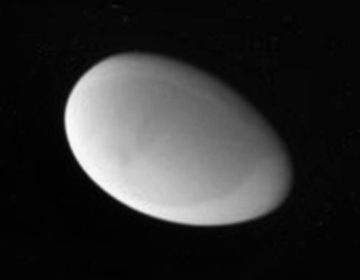
Many of the gas giants' moons aren't massive enough to attain hydrostatic equilibrium, so there's a veritable menagerie of weird shaped satellites out there. What makes Methone even more interesting is the fact that its surface appears very smooth, like an egg shell. No craters or other surface features are obvious. Cassini snapped this image on May 20 when it was 4,000 kilometers (2,500 miles) from the moon.
Methone was discovered in 2004 -- and was originally designated S/2004 S 1 or Saturn XXXII -- by the Cassini Imaging Team after analyzing photographs from the mission. It was named after one of the Alkyonides, the seven beautiful daughters of the Giant Alkyoneus in Greek mythology. Another two Saturnian moons are named after the Alkyonides -- Anthe and Pallene.



Reader Comments
to our Newsletter